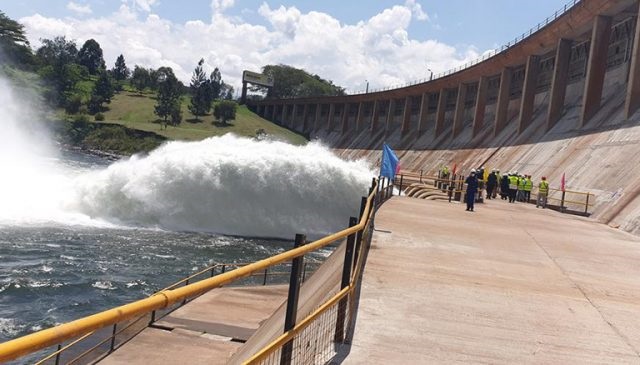
The government’s decision to take over Nalubaale and Kira hydropower dams comes barely a year following a similar step on Namanve Thermal Power Plant.
Kampala, Uganda | KHISA ISAAC | Ugandan government has repossessed assets of the country’s two oldest hydropower dams Nalubaale and Kira downstream of R. Nile in Jinja but it will have to inject substantial resources into the facilities to power the nation and the East African region for the next 30 years.
The government handed over the operation and maintenance of the two dams to Eskom, a South African electricity company in 2003, under a 20-year concession to help stabilize the country’s erratic electricity generation.
However, effective April 1, the government, through its agency, Uganda Electricity Generation Company Ltd (UEGCL) took charge of the operation and maintenance of the two facilities following the end of the concession as well as part of its strategy to take control of the energy sector.
Last year, UEGCL took over Namanve Thermal Power Plant following the end of its 20-year concession as it seeks to provide cheap electricity to consumers, especially the industrial sector that has for many years decried high electricity tariffs.
UEGCL also manages the Isimba hydropower dam commissioned in 2019 and now oversees the construction of the Karuma hydropower dam.
At the same time, the government also plans to take over electricity distribution from Umeme in 2025 once the 20-year concession comes to an end.
The operation and maintenance of the Nalubaale and Kira hydropower dams, however, place the government in an awkward position because it will have to strike a balance between investing in the two dams while keeping the electricity tariffs lower a major headache that Eskom dealt with for the past two decades.
UEGCL Chief Executive Officer, Harrison Mutikanga, said during a tour of the two dams on April.01 that the electricity facilities require at least US$ 10 million in the short term and US$150 to US$ 200 million in the long term to extend their operational lifespan.
The 150MW Nalubaale hydropower dam, formerly known as Owen Falls Dam, will be marking 70 years of operation next year. On the other hand, Kiira hydropower dam, with an installed capacity of 200MW was commissioned in 2003.
For that, Mutikanga said some of the equipment in two facilities are obsolete and needs replacement as soon as possible. The challenge, however, is that some of the equipment are out of the market and any attempt to replace them implies overhauling the entire system with a totally new technology making the entire exercise expensive.
The other challenge is that the government will need to either raise electricity tariffs to recoup the new investment or source an alternative funding option that will enable it to keep electricity tariffs low in order to support local businesses and industries.
Currently, electricity from Nalubaale and Kiira is said to be the cheapest at US$ 1.2 cents per unit at generation.
Daniel Oluka, the new generation manager at Nalubaale and Kiira hydropower dams said works on the two facilities revolve around the replacement of obsolete equipment.
He said there’s a need to upgrade the auxiliary switch gear for control, protection and monitoring of the power equipment, the intake and tail race crane that helps in the control of water floors during the system’s maintenance and interface panels that helps in the system monitoring and remote control purposes.
“Every technical asset has an expected lifespan and therefore at the time of handing over the dams to us, most of these equipment needed to be replaced. Therefore, one cannot say that there was an omission during the period because most of these works had a process to be followed,” he said.
George Tusingwire, the Chief Operations Officer at UEGCL said the dams remain fairly in a good condition notwithstanding identified defects: Nalubaale at 70% considering Eskom’s good investment and Kiira at 65%.
“We think that investment in Kiira should have been more but this is not a problem. As a government, this is something we can take on and improve,” he said, adding that major works will be required at Nalubaale to find a lasting solution to the alkaline silicate reaction that causes cracks in the dam.
Eskom build capacity
Nevertheless, Eskom builds a strong human resource capacity during the 20-year concession, according to UEGCL CEO Harrison Mutikanga.
He said the seamless transfer of assets from the South African firm to the Ugandan government is a testament to a well-built internal human resource capacity. He said UEGCL has been able to assemble a team that will continue to run the two dams.
“A lot of work has been done in the last 20 years but there’s still more to be done especially with the equipment and systems that have become obsolete owed to limited investment in the dams,” he said.
He said the government will continue to invest in the dams to reliably supply electricity to the nation and the region.
Currently, Uganda has installed an electricity capacity of slightly above 1, 346 MW with a demand of 800 MW, leaving a surplus of 546 MW, according to the Electricity Regulatory Authority (ERA).
 The Independent Uganda: You get the Truth we Pay the Price
The Independent Uganda: You get the Truth we Pay the Price



